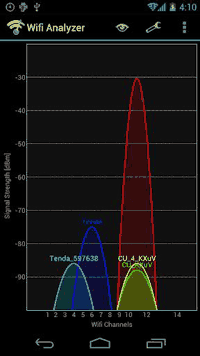
When using the analogy of a freeway to describe Wi-Fi, the 2.4 GHz and 5 GHz band can be compared to congested freeways allowing both fast and slow vehicles, while the 6 GHz band is the equivalent of a new, large freeway that only allows the fastest cars.

In the 6 GHz however, only new high efficiency devices will be allowed to operate.


This has also been a source of congestion, since older slower legacy equipment is sharing available resources (i.e. This proved to be a great strength to win over consumers, since network equipment doesn’t need to be completely overhauled at each new generation. Historically, newer Wi-Fi standards have always provided backward compatibility with older generations. IEEE Rules of Operationĭecisions made by the IEEE 802.11ax group and added to the standard will make Wi-Fi 6E even more efficient.Īrguably one of the most important decisions made by the IEEE 802.11ax group is that it disallows older generation Wi-Fi devices in the 6 GHz band, which is important because it means that only high efficiency 802.11ax devices will be able to operate in this band. Thousands of devices have received Wi-Fi 6 certification since the program started and the Wi-Fi 6E certification is planned to start sometime in early 2021. Wi-Fi 6E operates in the 6 GHz frequency band. The IEEE 802.11ax standard is now referred to as Wi-Fi 6 or the 6th generation of Wi-Fi and operates the 2.4 GHz and 5 GHz bands. To improve consumer understanding of the various IEEE 802.11 standard generations, the Wi-Fi Alliance decided to create consumer friendly names. The Wi-Fi Alliance focuses on certification of Wi-Fi devices for compliance and interoperability, as well as the marketing of Wi-Fi technology. It is scheduled to be finalized by the end of 2020. The IEEE 802.11ax standard for high efficiency (or HE) covers MAC and PHY layer operation in the 2.4 GHz, 5 GHz and 6 GHz bands. The IEEE 802.11 defines the technical specifications of the wireless LAN standard. Two main groups are responsible for shaping Wi-Fi’s evolution. Today I want to explore the IEEE 802.11ax rules of operation in the 6 GHz band and how they differ from operation in the 2.4 GHz and 5 GHz bands. In my previous blog post, I explored the FCC’s decision to open the 6 GHz band for Wi-Fi 6E standard operation, as well as the rules the FCC put in place to protect incumbent users in that space. Wi-Fi 6E Standard and Channels – 802.11ax Operation in the 6 GHz Band

Throughout this series of blog posts, you’ll learn the basics of operating rules for Wi-Fi 6E in the 6 GHz band, the challenges when validating Wi-Fi 6E designs and what testing solutions LitePoint has available for Wi-Fi 6E. LitePoint’s Eve Danel has developed this three-part blog series on Wi-Fi 6E and testing challenges.


 0 kommentar(er)
0 kommentar(er)
